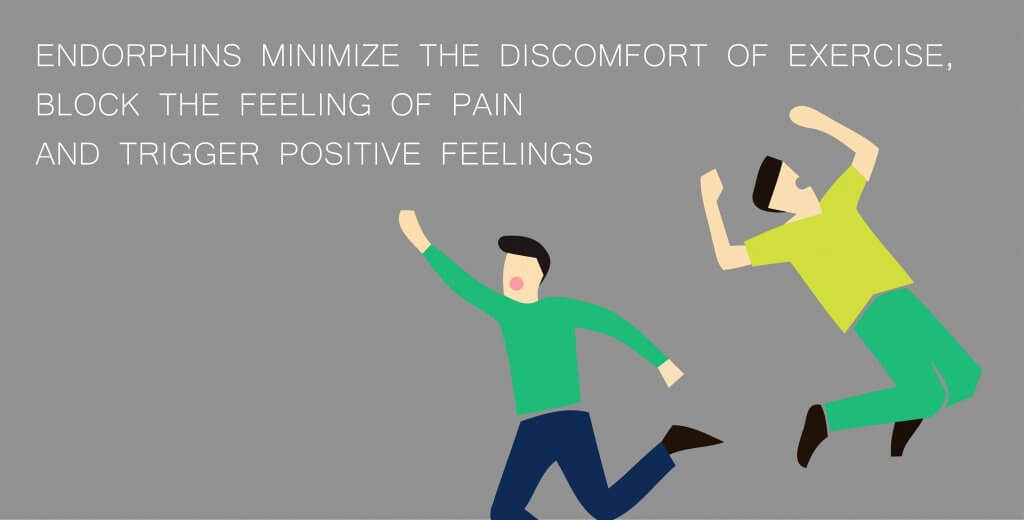
Try these 10 minute workouts if your schedule is tight but you still want to get some exercise. These exercises are easy to do and can be easily incorporated into your daily routine. They're also an effective way to increase your daily self-improvement. You'll feel the endorphin rush of a good workout, and you'll be able to squeeze them in throughout the day!
These 10 minute workouts have many benefits, and they are short enough to be worth it. For example, these exercises can target just one muscle group, allowing you to focus on that area. They can also be a total body strength workout, or an intense cardio session. They are still very effective, even if you don't have ten minutes. And they're quick, so there's no excuse not to give them a try!

You can incorporate a 10-minute exercise into your day in many ways. YouTube is a great place to start. This allows you to be focused on the exercises and not worry too much about time. A video will be available to help you review your work afterward. It's as easy as doing ten minutes worth of squats.
It is a great way to get started with a fitness program. A 10-minute workout can achieve similar results to a 45 minutes one, despite their short duration. It's possible to increase your metabolic rate by adding in a series of sprints lasting for just a minute, or high-intensity interval exercise. Adults should exercise for 75 minutes per week, according to the American College of Sports Medicine. However, optimal health doesn't require you to do hours of exercise every day.
For beginners, the Get Up and Go is an effective and simple way to strengthen your muscles without having to spend a lot of time. It is simple to incorporate into your routine and can be done in a mere 10 minutes. In just a few minutes, you'll feel more energized and get a better workout. You will also feel happier and more confident in yourself. This is especially true when you have a hectic schedule.

If you have time, you can complete a circuit. These three can all be done in 10 minutes. You can then rest for 60 secs. Continue the circuit for another 10 minutes. Eventually, you'll have completed a circuit of four exercises. This will take ten minutes. You can do this three times per week. It will improve your health and save you time. It will increase your stamina, flexibility and endurance.
FAQ
What are 5 ways to live a healthy lifestyle?
Healthy lifestyles include eating right, exercise regularly, getting enough rest, managing stress, having fun, and eating healthy. Avoiding sugar and processed foods is key to eating well. Exercise is good for your body and muscles. You can improve your memory and concentration by getting enough sleep. Stress management helps reduce anxiety and depression. Fun is the key to keeping us healthy and happy.
How can I tell what is good for me?
You must listen to your body. Your body will tell you how much exercise, nutrition, and sleep you need. To avoid overdoing it, it's important that you pay attention to what your body is telling you. Be aware of your body and do what you can to maintain good health.
What is the difference among a virus or a bacterium and what are their differences?
A virus can be described as a microscopic organism that cannot reproduce in another cell. A bacterium is a single-celled organism that reproduces by splitting itself in two. Viruses are very small (about 20 nanometers) while bacteria are larger (up to 1 micron).
Viruses are usually spread through contact with infected bodily fluids, including saliva, urine, semen, vaginal secretions, pus, and feces. Bacteria is usually spread directly from surfaces or objects contaminated with bacteria.
Viruses may enter the body through cuts, scrapes. bites, or any other break in the skin. They can also enter the body through the mouth, nose, eyes and ears, vaginal, rectum or anus.
Bacteria can enter our bodies through wounds, cuts, scrapes, burns, insect stings, or other breaks in our skin. They may also be introduced into our bodies through food and water as well as soil, dirt, dust, and animals.
Both bacteria and viruses cause illness. Viruses can not multiply within the host. So they only cause illnesses when they infect living cells.
Bacteria can multiply within their hosts and cause illness. They can infiltrate other parts of the body. To kill them, we must use antibiotics.
What's the difference of a calorie versus a Kilocalorie?
Calories are units used to measure the amount of energy in food. Calories are the unit of measurement. One calorie equals one degree Celsius of energy to raise water temperature by 1 gram.
Kilocalories refer to calories in another term. Kilocalories are measured in thousandths of a calorie. 1000 calories are equal to one kilocalorie.
Do I need to count calories?
You might be asking "What is the best diet?" or "is counting calories necessary?" The answer to this question depends on many factors, including your current health, your personal goals and preferences, as well as your overall lifestyle.
The Best Diet For Me - Which One Is Right For You?
My personal health, goals and preferences as well as my lifestyle determine which diet is best for me. There are many diets out there, some good and some bad. Some diets work for some people, while others are not. What should I do? How can I make the best decision?
These are the questions that this article attempts to answer. It begins by briefly describing the various diets available today. Next, we'll discuss the pros and cons for each type of diet. Finally, we'll look into how to choose the best one for you.
To begin, let's take a quick look at the different types of diets.
Diet Types
There are three types of diets available: ketogenic, high-protein, and low fat. Let's talk about them briefly.
Low Fat Diets
A low-fat diet restricts fat intake. This is accomplished by decreasing the intake of saturated fats such as butter and cream cheese. They are replaced by unsaturated fats such as avocados, olive oil, and cream cheese. Low fat diets are often recommended to those who wish to lose weight quickly. This diet can cause constipation, heartburn, and stomach problems. In addition, it may lead to vitamin deficiencies if a person doesn't get enough vitamins from their food.
High Protein Diets
High protein diets are known to restrict carbohydrate intake and promote the consumption of proteins. These diets are more protein-rich than others. These diets are intended to increase muscle mass and reduce calories. One problem is that they might not be sufficient to provide regular nutrition. They can also be very restrictive so they may not be suitable for everyone.
Ketogenic Diets
Ketogenic diets also go by the name keto diets. They are high fat and moderately carbohydrate and protein-rich. They are commonly used by athletes and bodybuilders, as they allow them train harder and more frequently without getting tired. You must adhere to all side effects, including fatigue, headaches, nausea and headaches.
How do you get enough vitamins?
You can get most of the daily nutrients you need through your diet. Supplements can be helpful if you are lacking in any one vitamin. You can purchase a multivitamin that includes all of the vitamins you need. You can also get individual vitamins from your local pharmacy.
Talk to your doctor to find out which foods are rich in vitamins. You can find vitamins K and E in dark green leafy vegetable such as spinach, kale and turnip leaves, as well a variety of sweet potatoes and sweet potatoes.
Ask your doctor for advice if you are unsure how much vitamin to take. Your medical history and current health will help you determine the best dosage.
Statistics
- According to the 2020 Dietary Guidelines for Americans, a balanced diet high in fruits and vegetables, lean protein, low-fat dairy and whole grains is needed for optimal energy. (mayoclinichealthsystem.org)
- WHO recommends consuming less than 5% of total energy intake for additional health benefits. (who.int)
- WHO recommends reducing saturated fats to less than 10% of total energy intake; reducing trans-fats to less than 1% of total energy intake; and replacing both saturated fats and trans-fats to unsaturated fats. (who.int)
- According to the Physical Activity Guidelines for Americans, we should strive for at least 150 minutes of moderate intensity activity each week (54Trusted Source Smoking, harmful use of drugs, and alcohol abuse can all seriously negatively affect your health. (healthline.com)
External Links
How To
What does "vitamin" actually mean?
Vitamins are organic compounds that can be found in foods. Vitamins help us absorb nutrients from foods we eat. Vitamins are not made by the body, so they must be obtained through food.
There are two types: water-soluble and fat-soluble vitamins. Water-soluble vitamins dissolve in water easily. These include vitamin C (thiamine), Vitamin B1 (riboflavin), Vitamin B2 (riboflavin), Vitamin B3 (niacin), Vitamin B6 (pyridoxine), Vitamin C, B1 (thiamine), Vitamin B2 (riboflavin), Vitamin B3 (niacin), and Vitamin B6 (pyridoxine). The liver and fatty tissues are home to fat-soluble vitamins. Examples include vitamin D, E, K, A, and beta carotene.
Vitamins can be classified by their biological activity. There are eight major categories of vitamins.
-
A - Vital for normal growth and maintaining good health.
-
C - vital for proper nerve function, and energy production.
-
D – Essential for healthy teeth, bones and joints
-
E is needed for good reproduction and vision.
-
K - Essential for healthy muscles and nerves.
-
P - Essential for strong bones and teeth.
-
Q – aids digestion of iron and iron absorption
-
R - Red blood cells are made from red blood cells.
The recommended daily allowance (RDA), for vitamins, varies depending upon age, gender, or physical condition. The U.S. Food and Drug Administration, (FDA), sets the RDA value.
For example, the RDA for vitamin A is 400 micrograms per dayfor adults 19 years or older. Because it is essential for the development of the fetus, pregnant women should consume 600 micrograms per daily. Children ages 1-8 require 900 micrograms per day. Children under 1 year old require 700 micrograms daily, while infants over one year old need 500 micrograms every day. This decreases between 9 and 12 months.
Children aged between 1-18 years require 800 micrograms of sugar per day, while overweight children need 1000 micrograms. Children who are underweight receive 1200 micrograms every day to meet their nutritional requirements.
Children ages 4-8 years who have been diagnosed with anemia need 2200 micrograms per day of vitamin C.
2000 micrograms per person is necessary for general health. Mothers who are pregnant, nursing, or have a high nutrient need will require 3000 micrograms a day.
1500 micrograms is the recommended daily intake for adults aged 70+, who lose approximately 10% of muscle each year.
Women who are pregnant and lactating need more nutrients than the RDA. Pregnant women require 4000 micrograms daily during pregnancy, and 2500 micrograms every day after birth. Breastfeeding mothers need 5000 micrograms per day when breast milk is being produced.